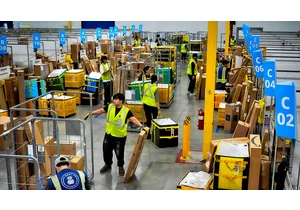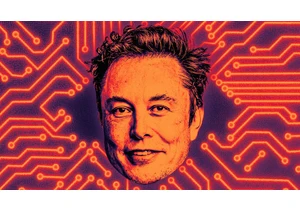Amazon, in its quest for greater efficiency, has developed new systems to shave seconds off each package delivery and to help customers make faster buying choices, even for new product types that they may know little about.
The company announced Wednesday it has created spotlights within its trucks to guide delivery people to packages for each stop along a route.
The technology, which Amazon is calling Vision Assisted Package Retrieval, works by shining a green light on packages so that the deliverer does not have to waste precious seconds reading labels.
“When we speed up deliveries, customers shop more,” said Doug Herrington, CEO of Amazon worldwide stores in remarks at the event. “Once a customer experiences fast delivery, they will come back sooner and shop more.”
Amazon said it would equip 1,000 active delivery trucks, supplied by EV maker Rivian, with the spotlight tech early next year. Herrington said the delivery van ceilings are equipped with cameras and LED projectors that instantly read package labels so it knows which are bound for which customers.
Amazon is Rivian’s largest shareholder and has placed orders for 100,000 electric delivery vans to be deployed by 2030.
Shares of Amazon and Rivian were up about 1% each in morning trade.
The new system calls to mind a technology widely deployed in Amazon’s warehouses that shines a light on items on robotically wheeled shelves so workers can pick them and put them in bins. That system replaced one that had some workers walking up to 10 miles a day pushing carts through narrow aisles to find stowed items.
Shortening by a few seconds the time it takes for each package delivery means Amazon can increase the number of deliveries each worker makes in a shift. Today, Amazon said, delivery workers reach about 100 customers each day.
At an event held at a warehouse near Nashville, Tennessee, Amazon also said it is using new artificial intelligence software that can reduce the need to spend minutes or hours researching new products, such as televisions and dog food. The online guides will include more extensive information, as well as recommendations, so that customers can make more informed decisions more quickly, the Seattle company said.
The new feature follows one announced earlier this year putting an AI search into the main Amazon website. Called Rufus, it gives users longer answers to search queries.
Separately, Amazon announced it was planning smaller warehouses attached to its Whole Foods grocery stores so that when items are not offered there customers will not be tempted to shop at competing stores. That way, shoppers could order a bottle of Pepsi while shopping at a Whole Foods, which doesn’t carry the soft drink, and have that brought to them when they check out.
The first such store is in Plymouth Meeting, Pennsylvania – about 15 miles north of Philadelphia – which will start offering the service sometime next year.
—Greg Bensinger, Reuters
Autentifică-te pentru a adăuga comentarii
Alte posturi din acest grup

The flash floods that have devastated Texas are already a difficult crisis to manage. More than 100 people are confirmed dead

Amazon is extending its annual Prime Day sales and offering new membership perks to Ge

How would you spend $342 billion?
A number of games called “Spend Elon Musk’s Money” have been popping up online, inviting users to imagine how they’d blow through the

On Tuesday, AI lab Moonvalley

As Elon Musk announced plans over the Fourth of July weekend to establish a third political party,

Dolores Ballesteros, a Mexico-based mother of two, was getting desperate. Her 6-year-old son kept hitting his brother, age 3, and seemed angry at her all the time. No matter what she did, she coul
